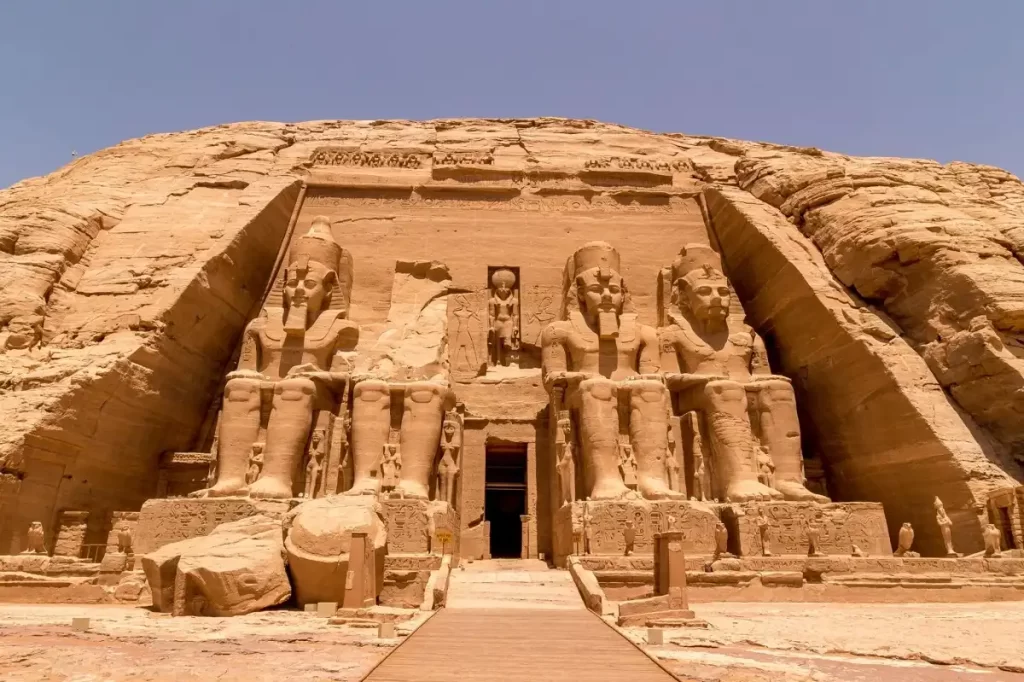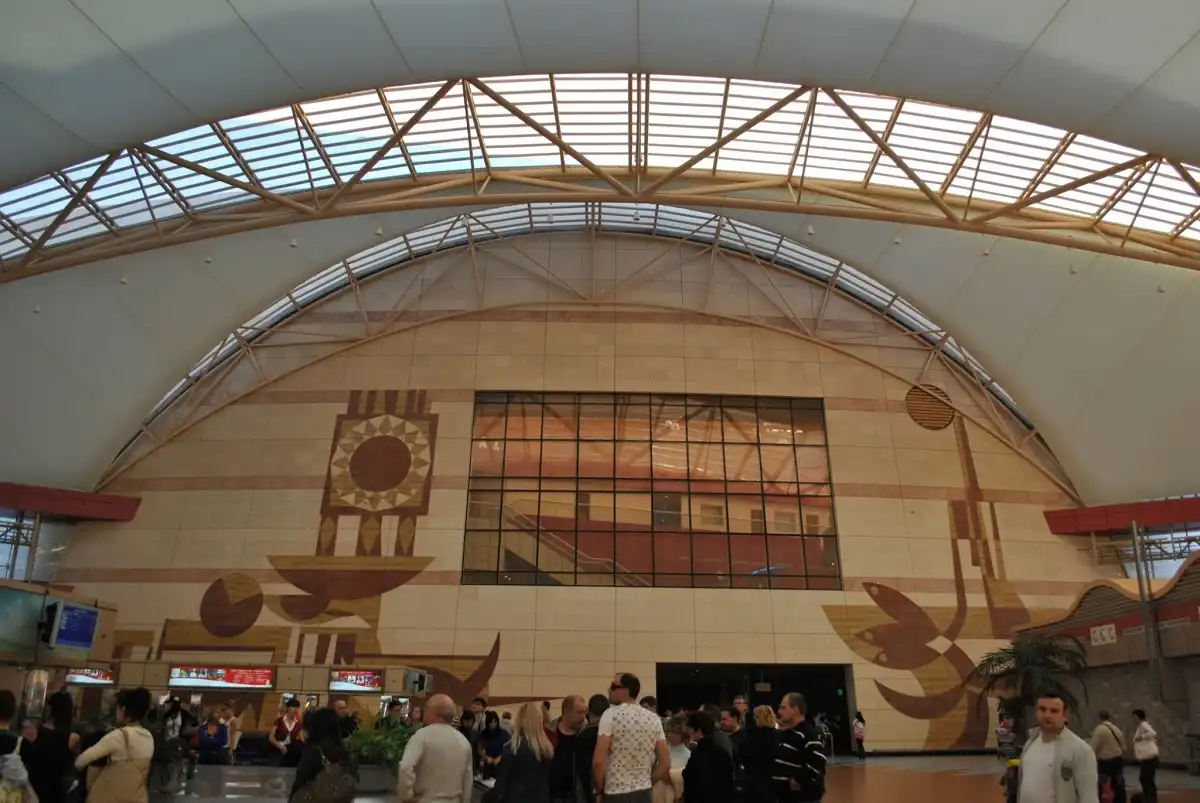
Abu Simbel Temple
[ez-toc]
Some things in life defy belief as being from this world or even existing in our realms, such as the fabled Abu Simbel temples, which stand as a holy guardians and a tangible reminder of the amazing majesty and dignity of the ancient Egyptians. Every single soul that laid eyes on the Abu Simbel temples was inspired by the cosmic solar miracle that revealed visions of the earliest definitions of beauty, glory, and happiness. The temple is one of the most well-known archaeological sites in the world since it is home to a wealth of fascinating information. The enormous Abu Simbel temple is a remarkable marvel for a variety of reasons, as evidenced by the fact that it is listed as a crucial Nubian landmark on the UNESCO World Heritage List.
The Abu Simbel Temple’s history
Ramses the Great (1279–1213 BCE) built the great temples at Abu Simbel, starting in 1264 BC and finishing in 1244 BC, a period of 20 years, and dedicating them to the gods Ra–Horakty, Ramesses II (The Great Temple), Ptah, the goddess Hathor, and Queen Nefertari. The “Temple of Ramesses, Beloved by Amun” was constructed for two main purposes: first, to celebrate and immortalize his victories and achievements; second, to demonstrate his devotion to his lovely wife Nefertari. In 1813, the temple was unearthed after spending a considerable amount of time buried beneath the sand. Swiss explorer John Lewis Burckhardt had been directed to the location by an Egyptian Nubian youngster named Abu Simbel. The sand was entirely removed from the temple in 1909 to become one of Egypt’s most incredible attractions.
Site of the Temple of Abu Simbel
The magnificent temple of Abu Simbel, which was carved directly into the mountainside as a testament to the power of ancient Egyptian civilization, is situated at the southernmost point of Upper Egypt, in the Nubian lands across the Sudanese border, on the western bank of Lake Nasser, about 230 kilometers (140 miles) southwest of Aswan.
The Design of the Temples at Abu Simbel
The temple’s architecture has an amazing capacity to convey the full majesty and glory of ancient Egyptian culture. With four seated enormous statues of Ramses the Vast sitting on a throne that stands 20 meters tall and is located at the entrance, the great temple is 30 meters high and 35 meters long (65 ft). Under the large statues, there are several smaller statues that represent him slaying foes and defending his family and the gods. Ramesses II is shown sitting on a throne and donning the twin crown of Upper and Lower Egypt at the entrance. Inside the temple, there are three parallel halls that rise up to 56 meters (185 feet) in height. Ramsess is shown as the ruler of the underworld Osiris in the 16.7 m wide and 18 m tall hypostyle hall, which is held up by eight enormous Osiris pillars to underline the pharaoh’s eternal character.
The central chamber is located inside the hall and has four statues for each of the gods. It is also decorated with statues of the pharaoh, pictures of the gods, and artifacts from his victory at the Battle of Kadesh in 1274 BC, which resulted in the signing of the world’s first known peace agreement. 22 baboons are lined up in a row on the façade, their arms raised in adoration of the rising sun. The four seated gods of Ramses II, Ptah (the deity of creation), Amun (the Creator God), and Ra (the Sun God), who is the focal point of the Sun Festival, are located in the inner sanctuary of the temple. Just 100 meters northeast of the enormous temple ornamented with two sets of colossi that are divided by a wide entrance is the lovely Nefertari temple. The statues, which stand 10.5 meters (35 feet) tall and are devoted to “Hathor,” the goddess of love, enticement, and joy, the sky falcon Horus, and Maat, the goddess of justice, among other deities, include two statues of the queen and six statues of her husband King Ramses II.
Abu Simbel Temples’ Relocation
The Abu Simbel temples have undergone a great deal of change over the years, but the biggest change occurred in the middle of the 1950s following the construction of the Aswan High Dam, which caused the water levels in Lake Nasser to rise, resulting in the complete destruction of both the Philae Temple and the Abu Simbel Temple.
To prevent Abu Simbel from being destroyed, the Egyptian government asked the UNESCO international foundation for assistance. A clever plan to save the temples was devised by a Swedish business named “Vattenbyggnadsbyrn,” and in 1960, the entire world came together to organize the largest and most difficult rescue mission in recorded history. The entire rescue operation took four years from 1964 to 1968 and cost 300 million dollars in today’s financial value.
The Abu Simbel temple was moved using a method that involved peeling away, cutting large, heavy blocks that weighed 20 to 30 tones with power saws, and moving them to the new location where they were put together using drilled holes and reinforcement bars to create an artificial cliff that resembled the original one on a platform made of cement and steel. This platform was then surrounded by an artificial stone mountain.
Sun Festival in Abu Simbel
The Abu Simbel temples in Egypt have hosted one of the oldest festivals in recorded human history for more than 3500 years, during which the sun beams down on the structure, allowing celestial light to enter and illuminate even its darkest crevices. When light enters the central chamber and illuminates the faces of the seated statues of Ramses II, Amun (The Creator God), and Ra (The Sun God), all but Ptah (The God of Creation), who was associated with the ancient Egyptian underworld and had to be kept in complete darkness, it marks the anniversary of Ramsess II’s ascension to the throne on February 22 and his birthday on October 22. Travelers from all around the world continue to commemorate the alignment of sacred buildings with the rising or setting sun today.



